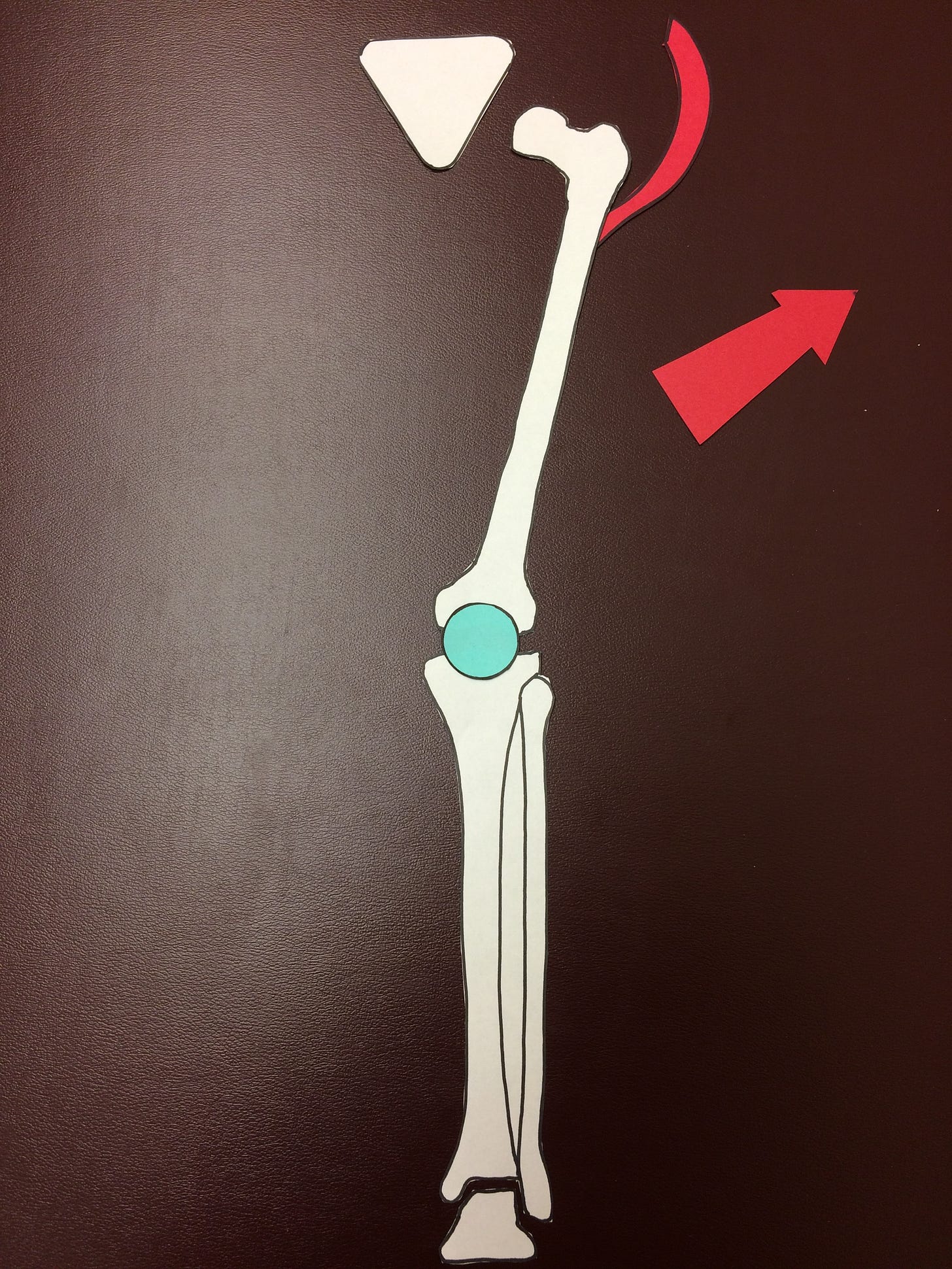Our bones are held together mostly by muscles and soft tissues. Our muscle tone, or lack of, affects our bone and joint alignment. Once that alignment drifts past a certain amount of degrees in an angle, the joint becomes more unstable, and an unstable joint can have increased pain.
This is an over simplified discussion and schematics of vectors and forces. In real world situations, there is a very complicated chorus of competing and synergistic, or helping forces, in all planes of movement.
Hip Joint
Starting with the hips, strengthening usually involves improving what is called hip abduction, or the ability to raise the hip outward against gravity. The hip abductors (in red) main job is to hold us upright while we walk, since walking is a series of briefly balancing on one foot.
There are exercises to make the hip abductors stronger in many different postures. Some exercises strengthen the hip in an open chain, which means the foot is in the air. However the hip abductors usually work isometrically, in a closed chain, with the foot planted. That’s why it’s important to check the alignment in a mirror for feedback.
Women have slightly wider hips, which causes an increased hip angle, and can then affect knee and ankle alignment. These issues are extremely common in teenage girls, who grow taller very quickly, and their muscle tone has not progressed fast enough to keep up with their role in joint alignment.
Knee Joint
The knee joint can drift from knock kneed to bowlegged for various reasons. Sometimes we are born that way. Sometimes activities change alignment, like horse back riding. Sometimes injuries lead to arthritic changes, which in turn change the shape of the joint and a drifting malalignment.
Some of these issues can arise from the hip alignment above, or the foot alignment below. Addressing strengthening in all the joints can help.
Again, teenage girls frequently have growth spurts where their bones are growing faster than their muscle strength. This knock kneed posture can contribute to pain at the knee cap, especially when walking stairs. In the picture above, the knee cap (green) is riding towards the outside of the knee. Increasing muscle strength in the quadriceps, hip abductors, and/or taping, can help pull the kneecap back to it’s original groove, decreasing pain. Taping will be a future article.
The Foot and Ankle
Some people have high arches, and some are flat footed. Some issues arise from weak foot and ankle muscles which causes the arch to collapse, or causes a flat arch. Sometimes weak hips and a knock kneed posture can cause a flat footed posture.
We’ve only addressed the hips and below, however some issues can arise from the spinal alignment, which in turn affects lower extremity alignment. That really requires hands on, and in person assessments.
Check out Part 2 of Common Hip, Knee and Ankle problems for suggested strengthening exercises (coming soon), and if you like the content, consider hitting the free Subscribe button to get the latest articles.







